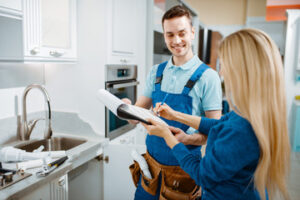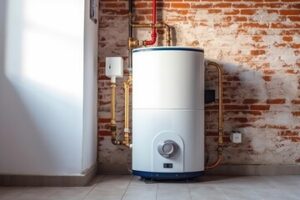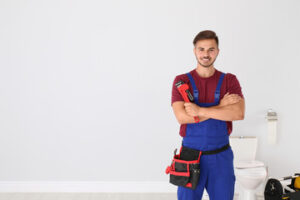When you are facing a plumbing emergency, you need to act fast. This is why it is important to find a plumber that offers 24/7 service.

There are some plumbing issues that can be dealt with at a later time but a burst pipe requires immediate attention. It can cause significant water damage to your property, not to mention putting the safety of your family members at risk.
A pipe that bursts can cause major damage in a short amount of time. Water flooding a home or business isn’t just a nuisance, but it can also lead to rotting floorboards, mold and warped furniture. This is why it’s important to keep an eye on your pipes throughout the year and call an emergency plumber if you see any issues.
While it may not be as dangerous as a gas leak or sewage backup, a pipe burst still warrants an emergency plumbing service call. Without access to clean water, you won’t be able to wash clothes or dishes, flush toilets, take showers, or tend to your garden. Additionally, the excess moisture can lead to health problems like vomiting, fever, and gastroenteritis. To minimize damage and cost, it’s crucial to act fast when you first notice any signs of a burst pipe.
The first step is to turn off the main water supply valve, usually located close to the point of the burst pipe. This will prevent any new water from entering the system and reduce leaking. Next, you’ll want to start the cleanup process by removing as much water from affected areas as possible. It’s also a good idea to open windows and use fans or dehumidifiers to encourage airflow and speed up the drying process. Finally, be sure to take pictures or video of the damage for insurance claims purposes.
In the meantime, you can try using a repair sleeve on the burst pipe to stop any further damage. This consists of placing a piece of rubber over the burst area, covering it with a wood block and clamping it all together. However, this solution doesn’t last as long as a professional repair and should only be used for temporary relief.
There are a few telltale signs that you might have a burst pipe. These include sudden changes in water pressure, faucets that spit or splash, unexplained leaks, puddles forming under sinks, water stains on walls or ceilings, and odd smells. Ultimately, the best way to avoid a burst pipe is to have your pipes regularly inspected by an experienced plumber.
Sewer Backups
A sewer backup is one of the most unpleasant plumbing emergencies that can occur. A clog in a single drain or toilet can often be resolved with the use of a drain snake or plunger, but a full-scale sewage backup requires immediate emergency help. This is because raw sewage can enter your home and pose health risks for you and your family.
A full sewer backup can happen when wastewater can’t make it through your home’s pipes to the septic tank or public city connection. This can be caused by blockages, tree roots, heavy rainfall, or system overloads. When these issues occur, wastewater can back up into your home through toilets, showers, and sinks. This can lead to a variety of problems, including water damage and bacterial contamination.
Signs of a sewage backup can include slow-moving drains, gurgling noises from toilets or tubs, and visible sewage in sinks or bathtubs. A professional plumber will be able to assess the issue and find the source of the problem. They can also provide helpful tips on how to prevent future problems.
The most common cause of a sewer backup is blockages due to improper disposal of waste. This includes cooking grease, food scraps, tampons and pads (even if they’re marked “flushable”), baby and intimate wipes, condoms, paper towels, hair, and more. A sewer backup can also be caused by trees that have grown over or around sewer lines, which can crack and break the pipes.
Sewage backups are a huge inconvenience and pose many health risks for you and your family. The contaminated water can cause gastrointestinal issues, respiratory problems, and even infections. This is because sewage contains a cocktail of harmful bacteria, viruses, and other contaminants that can cause disease. This is why it’s important to have a professional address the issue immediately and ensure thorough cleanup and sanitation. A sewage backup can also lead to costly property damage. However, you may be able to get some or all of the costs covered by your insurance company, depending on the nature of the claim and your policy.
Water Heater Issues
The water heater is an essential household appliance for cooking, bathing, and cleaning. When it fails or begins to leak, the results can be devastating. Emergency plumbers can address issues ranging from hot water production to gas connections and beyond. They have the tools and training to diagnose problems quickly and make repairs efficiently.
Most plumbing emergencies can be prevented by taking a few simple steps. For example, insulating exposed pipes in cold climates can prevent them from freezing and bursting. Disposing of waste properly and using drain covers can also minimize clogging. Regularly checking and maintaining appliances like water heaters can reduce the risk of failure.
It can be difficult to know when a plumbing problem constitutes an emergency. Many people mistakenly assume that any leak is an emergency, but only if the leak creates water damage or poses a health or safety hazard should it be considered urgent. Emergency plumbing services are often more expensive than routine maintenance, but if you can avoid the need for costly repair or restoration work, it is worth the investment.
While many plumbing problems can be resolved by shutting off the water supply and containing the issue, some may require immediate attention. Leaking or dripping pipes, sewage backups, and overflowing toilets are examples of serious plumbing issues that should be addressed right away.
When deciding whether to call an emergency plumber, be sure to ask for a quote before the work begins. This will help you budget for the service and determine if the costs are reasonable. Many plumbers charge a standard hourly rate for basic plumbing services, but some may have additional charges such as trip fees or after-hours rates.
It is important to contact several plumbers before making a decision. Be sure to compare prices and services, and explain the situation to each one to get a better idea of what to expect. Also, be aware that a plumbing professional might need to return to your home later to complete the job if parts are needed. Typically, these returned visits are included in the original estimate, but it is always good to have this information in advance.
Clogged Drains
When one or more drains clog, it can disrupt your daily routine and cause water damage in your home. Emergency plumbers offer a wide variety of services to unclog drains and restore full functionality to your plumbing system.
If you have a simple clog that can be addressed with a plunger, it may not be necessary to call an emergency plumber. However, if your clog is due to a more serious issue such as an overflowing sewer line or broken garbage disposal, you should call an emergency plumber immediately.
A clogged toilet or sink can result in flooding and significant water damage. An emergency plumber will use specialized tools to remove the clog and restore proper functioning to your plumbing system. You can prevent clogs by properly disposing of waste, using non-toxic drain cleaners, installing drain guards, and regular cleaning of your drains and pipes.
An emergency plumber can also help you install or repair a faulty shut-off valve. It is crucial to have your shut-off valve working properly because it is what protects your house from water damage in the event of a leak or burst pipe.
Emergency plumbers are trained to handle all types of plumbing emergencies, from the most common to the most severe. If you notice a water leak in your home, a clogged drain or pipe, or a backed-up sewer line, it’s important to turn off the water supply before calling a plumber. Doing so can help minimize or even prevent costly repairs in the future.
When searching for a reliable plumber, you should always check reviews and testimonials. This can help you find a qualified emergency plumber to solve your problem quickly and efficiently. It is also important to make sure that your plumber has the appropriate certifications and insurance. Lastly, you should never try to fix a plumbing emergency on your own, as this could lead to further problems or injury. Calling an emergency plumber can save you time, money and hassle in the long run. The cost of emergency plumbing depends on the severity of the issue, so it’s best to prepare by having a budget in mind before you need to hire an emergency plumber.


